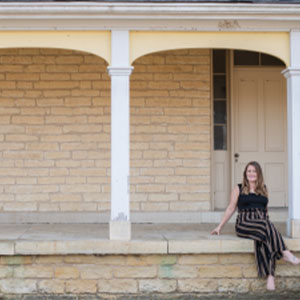
by Jessie Cooper | Jul 17, 2020
In closing the last series I felt a sense of peace. Since March, like many of you, I’ve been struggling to sort out what’s happening in my mind and heart as well as process what is going on in the world. In Brene Brown’s podcast she mentioned that anyone who doesn’t answer, “how are you” with, “it’s complicated,” isn’t being honest. We are all collectively living in a time where we are scared, anxious, mourning and the like. Yet through our pain we are also offered the opportunity to heal. At least, I believe this to be true.
Prior to March this year I was still in a place where I believed negative emotions were something to be ashamed of and avoided like the plague. That I should just, “be happy.” While I was honest with honoring my own story, I wasn’t seeing pain as my messenger. I was just trying to make sure it didn’t happen again. I don’t know if this is true for other survivors but it is true for me. I’m very hypervigilant and can get overwhelmed by a lot of stress or noise in my environment. Each time I have a bad day I sit in my own head and wonder how I could do better and from that not experience negative emotions. I think we’re all taught this to an extent. If you don’t feel “happy,” the pharmaceutical giants are more than eager to write you a prescription. Now please don’t get me wrong, medication can be a wonderful thing for people who need it. I needed it during my postpartum depression. What I’m saying is that the messaging to be happy is very loud in our society.
One night during April I crashed. I sat in a bath crying to the sky. I couldn’t think my way into a happier day and declared, “what do you want from me?!” to who I believe to be God our Mother. Relief immediately set in. I felt so deeply that what was wanted was for me to feel. Feelings are meant to be felt. They are messengers telling us what is and isn’t Ok with us and our world. They aren’t meant to be silenced or problem solved away. I got it. No more planning to be happy, plan to live fully.
After realizing that my emotions were meant to be felt I’ve shifted into a very raw space. I’m being honest with you because I’m honored you log in every week and read what’s in my heart. I hope it serves you the way it serves me. From my rawness I’ve pretty well sat in vulnerability daily. It feels like being a walking bruise, no kidding. I’ve decided to give kindness to each wave of negative emotions, celebrate joy, and to live authentically from here on out. I know I’ve got a lot to learn about who I am, what I have to give, and what I want to share. I also know I’ve never been this excited or humbled in my life. I’m making every decision from my guide within.
In listening always to my inner guide I don’t know who I will find. Who will you find if you do the same? To me there is a lot of environmental conditioning and years of learning how to be in our society. I want to find my truth without that noise and in the same way I want you to find yours. I feel that if all of us took the time to lean in and find out who we were before the world told us who to be, our existence would change overnight. We could find our joy. We could listen to the pain of the world, hear it’s story, and provide guidance. I don’t know about you but I can’t hear when I’m not me.
Forging Ahead
Here is my promise to you. I promise to dig in and find me. To share my story as I undercover the conditioning that made me and the strength I hold beneath it all. From my strength I want to change the experience of children with autism. I want to eradicate gender norms. To be the badass woman in business I am. Just publicly now. I want to live largely and freely. In sharing my story I want to shine a light on your strength too. Who are you? What do you want? What’s holding you back?
I’m changing the narrative. I’m going to begin writing for those who are on a path to healing. For those who know pain. For our children. For the lost. For those who are willing to show up with an open or curious heart. So that all of us know we are enough, can raise our children to know their worth, and live freely. Because collectively, if we do this, we can change the world.
Yes baby, you are enough. I’m oh so glad you’re here.
Xoxo,
Jessie

by Jessie Cooper | Jul 9, 2020
Over the course of the last month and a half I’ve written to you all about imperfect parenting. Honestly COVID-19 has been a do or die for me. Prior to COVID-19 I was spending too much time on the seesaw of authenticity and perfection. It was exhausting. Since I’ve been home I’ve written to you about lying and stealing, putting down busy and picking up peace, understanding anger, and daddys. Yep, that’s it. That explains my COVID experience in a nutshell. Blog done. Just kidding. Today I want to end the series with a small essay on embracing authenticity.
Parenting Memos Are Shifting
Currently I’m reading “Untamed,” by Glennon Doyle. She says everything better than I’m going to but please let me try (also please read this book)! One of her chapters writes about parenting memo’s. In the 1950’s the memo was birth your baby then make sure they are seen and not heard. In the 1980’s the memo was birth your baby and continue on with wine spritzers and cigarettes. Fast forward and today our memo is birth your baby, then engross yourself with their every waking moment, and even in doing that you’re failing.
It’s a rat race. We are all losing. I remember when I had Henry I felt overwhelmed by him. Now a big piece of that was my own postpartum depression but another piece of that was feeling that I had all the scholarly knowledge in the world and could not keep up with the Joneses. There was/still-is so much societal pressure to be a perfect mama. But who are they? That stupid Jones family? Why the hell are we all trying to keep up? Personally I’m done.
In being home with my children since mid-March I was given gifts I will always be grateful for. The first gift is that by stepping into Shelter-in-Place I could not keep up my pace as perfect mama and authentic mama simultaneously. That struggle had to stop. The second gift was I was able to step away from the noise of society to think about what I truly wanted for my children and myself. My new reality was surrender. And when I thought I’d surrendered, I surrendered more. Through not having a society to keep up with or standards to measure myself against I was able to show up. Truly show up.
Here’s what I learned
The day-to-day decisions and rules I made for myself and the children didn’t matter. Really. How many grams of sugar consumed, screens seen, or books read did not make or break my children. Furthermore the “social” environments (music class, swim class, story time, etc) that I was beginning to run them around to also did not matter. Also, for me, social standards don’t really matter either. I’ve got some really wonderful core friendships and if I never see a cocktail party again I’m good. Really. In sheltering without my own “rules,” I found my children have natural interests. I knew this prior to sheltering, but only honored it when I wasn’t trying to be a perfect mama. This looked like observing them on a prairie path vs. structured art time. Sheltering took me into observation mode daily as I surrendered. My children know what they want to do and what they are curious about every minute of every day. I don’t need to create this for them.
In our home what matters is being seen and loved for who we are; my children, my husband, and myself. It’s my job now to honor who I am and be a model for showing up as myself. Not showing up as I’m told to be. By doing this I’m allowing my children to show up for who they are supposed to be.
I do not know what this looks like yet beyond messy. I know we’ll have to say, “no,” to a lot of old, “yeses.” I know I’ll continue the good fight to raise my children closer to nature than technology. I know that before I discipline I’ll seek to understand. And I know that I’m here to listen to my own soul so my children can listen to theirs. What we find on the other side of this journey is unknown. But us Topalov’s? We’re going to live fully.
My hope is that you and your family live fully too. Collectively, that we can all say goodbye to the rules that tamed us and show up for our authentic lives. That through this authenticity we can in fact bring healing, joy and a new future to our children and thus the world.
New birth memo: birth your baby, love them with your whole heart, let them fly and let them fall, while flying freely yourself.
Xoxo,
Jessie

by Jessie Cooper | Jun 25, 2020
Last week I wrote about my own journey during COVID-19 as an over functioner in my imperfect parenting series. If you missed it check it out. It’s good stuff. This week what I’d like to expand on how anger shows up as I’ve written a lot about anxiety.
Anger is no stranger to me. It’s also the emotion that I experience that I feel a ton of shame over. In the moments that I’m angry I feel pretty much like the scum of the earth. I go into a cycle of feeling like a horrible person and mom. Over the past year with two young children I’ve had a good amount of these shame spirals.
Dealing with anger
Dealing with anger is personally very hard for me; I’ve had a long journey with anger. As a survivor of domestic violence I see an outburst of anger as a warning sign. I either feel like a person around me is becoming a threat or am fearful I will become a threat. In my early years and through young adulthood I used anger to protect myself (get bigger so I wouldn’t be hit) and to express the internal hurt I was feeling. Through my 20s as I stepped away from violence I healed my wounds and told myself, “never again.” In my 30s a new form of anger has come into my life as a wife and mama of young children. That is where shame popped up big time for me. While I have never hurt my children physically and never will I have experienced anger with my children and it kills me. I tell you this because I had forgotten until recently that anger tells a story that needs to be seen.
I know as a practitioner that anger is a secondary emotion. This means that anger is present when there is something else going on emotionally. Tara Brach did a recent podcast on anger and she reminded me of this. While in my head I knew this to be true for some reason it didn’t stop my own shame cycle as anger popped up for me these last three months at home. It wasn’t until a fight with my own dad in Ohio that I realized why I hold anger and what to do with it.
One afternoon he took our boys to a spot I couldn’t see them. I asked next time he gave me a heads up. He blew up, feeling I didn’t trust him and I got about as big as I could verbally until he walked away. It hurt like no other. It was the first explosion in 15 years I’d seen. But this time I did something different. I walked away and held myself in my heart for about 20 minutes. This looked like breathing through my belly and washing light into my body with visualization. Then I walked to my dad and asked him what hurt. That’s when I found out my dad was having an awful time adjusting to us because he too had been alone for three months and was over functioning prior to our visit. Through this interaction I was able to honor my own trauma story.
I had realized as a trauma survivor that when anyone (including my kids) screams or hits I felt like I needed anger to make myself big and protect myself. While it doesn’t seem logical that a screaming, hitting toddler would trigger me, my limbic system doesn’t know the difference. In seeing my story clearly I have melted the shame and know personally self care (walking away) is absolutely necessary for me when I’m overwhelmed. It feels silly to say I can’t see the difference between Henry kicking me hard and being physically beaten. But feeling silly and shameful does nothing to serve my soul.
My story may be your story
This is the story of anger. It holds on to each of us until we can find the core. What is your story with anger? When do you explode? What do you say to yourself? I believe wholeheartedly that anger is a messenger. Only when you listen to the message and provide yourself radical love will anger melt away. From the exhausted parent going about it in a way that brings shame, to a nation crying for change, anger is speaking to us all.
So what can you do? What can we all do? I don’t think everyone will have the same privilege I had to confront my dad and my own anger together. While it hurt immensely the night it was incredibly healing. I do think each and every person can ask their anger, “Why are you here? What do you need to say to me?” This can look like journaling, walking in silence, and reading wonderful books (try Harriet Lerner “The Dance of Anger”). Most important is to get curious while you are compassionate with yourself. Through your curiosity and kindness anger will speak and then melt away. When you learn the lesson anger leaves.
My darling ones, we can all fly free.
Xoxo,
Jessie

by Jessie Cooper | Jun 17, 2020
It’s been a few weeks since I’ve written in my imperfect parenting series. The world has been hurting and it turns out so was I. I’m grateful for my own personal struggles and awakening this past week but man it was hard. I’m going to put down perfect (remember I promised I would?) and tell you my real deal.
Sheltering in Place 2.0
A week ago Saturday we were all packed and ready to head to Ohio where my family is. After almost three months at home we decided we could shelter with family verses sheltering by ourselves. In the days prior to the trip I had run a marathon. I’m sure it sounds familiar to a lot of moms. I ordered groceries for the car, a Target pick up, met the dog boarder for Simon, took Simon to the dog boarder, laundry for everyone, bags for everyone but Martin, car activities, iPad charged, extra sunscreen, and a stack of books for me. We got in the car at 7:00 am and I was exhausted. My husband turns to me and goes, “thank you (I pause ready for praise!) for remembering to get gas,” in utter sarcasm. My heart sank as it usually does in these scenarios. I grabbed my laptop and buried myself in our family budget.
Our first stop was my uncle’s Lake House on Lake Erie. Sounds like a dream after 3 months at home. We got to the house and I did potty, diapers, lunches, sunscreen, and swimsuits. I’m already exhausted, remember? The kids get packed up again and we’re off to a secluded section of the beach where my uncle has jet skis. We’re unpacking three kids and one dog (Teddy is too old to board). Henry and Declan are like flies to the light once they see the water. Martin? Jumps on a jet ski and rides away. For a god damn hour and a half. Luckily my cousins were there and saw my panic with my children and the water. They jumped in to help supervise. Me? I was livid. Here I was exhausted after three months feeling like the primary caregiver with the addition of prepping for traveling and my husband was nowhere to be found. I’ve also successfully ran a company and prepared it for some awesome growth forward to serve more people. I wasn’t just physically exhausted on that Saturday, I was mentally done.
Now don’t get me wrong. I understand my husband needed to chill out. He’s also been trapped for 3 months in our home. I’m sure enough women have been through this scenario enough times that it’s easy to blame my husband for his inaction on getting ready for the trip then riding away. Leaving me with the burden of responsibility is equally our responsibility. Let’s dig in.
I’ve often referenced Brene Brown and her amazing work. I hope I’m lucky enough to someday say thank you in person to her; she’s changed my life more times that I can count. Her latest work is a new podcast, “Unlocking Us.” After moving through the tough emotion of feeling very alone about the responsibility I bear at home I needed this. I plugged in “Brene on Anxiety, Calm + Overfunctioning.” For the next 40 minutes I listened to Brene call my bullshit while giving compassion to the anxiety I held during COVID.
COVID-19 and Self-Care
I’ve written to you all many times about self care during COVID. I also personally wrote about over functioning and underfunctioning. I took surface steps (like a bath at night) to calm down my over functioning just to jump out and start my cycle all over again. I was writing these words to you while calling myself awful names (bossy, controlling) and feeling helpless stopping the process of managing our home. It took me actually stepping outside of our home and getting a break with the kids (this came later at my parents house) to see what I was up to.
Going into and during Sheltering in Place I turned on over functioning to volume 100. I was so scared of the virus coming into our home and grieving the life we had before the virus. I was worried about Henry, Declan, and especially Dametrius being new to us. Martin and I were also on a journey to a healthier marriage. And I was also deeply worried prior to the PPA Loan about my employees.
In my work I was and am the luckiest woman in the world; truly. My team honors my heart and leadership. They bring these amazing skill sets and systems to support my vision. Instructional ABA Consultants is a space I no longer over function. God bless my team. Home? No one calls my bullshit and I went to town running this house like a navy ship. My husband is a classic under functioner and slinked away.
When I’m not in a stressful place in life I still struggle with over functioning at home. Like I mentioned before Martin and I are still figuring out what our partnership means to both of us including how that plays out day to day. It’s a journey. A piece of that is that when I get anxious I immediately move to control every outcome and Martin prefers to hide when he’s anxious. We’re a perfect storm. In listening to Brene I saw myself and my husband so clearly. These three months and the visualization of the jet ski’s incident was the message I needed to hear.
Originally when I was going to write about the juggling act I’m guessing I was going to write about putting down your home projects that don’t serve you and find time to be present. On the surface that’s great but if underneath you’re still screaming it won’t serve you (or me). Here’s what I suggest to everyone. Rest. No really, rest. There is no way to come out of over functioning or under functioning if you’re exhausted. Or to even identify if you were doing it to begin with. Very personally I was able to do this through our trip and am now working to call my own bullshit because Martin’s not there yet. In the same sense he can work on saying when he’s overwhelmed versus hiding in the Iphone. We both have work to do but through it we can pick up peace.
The world is hurting right now. Me too. I’m guessing you too. If we can collectively reset and be kind to our body & minds peace is on the way.
Xoxo,
Jessie

by Jessie Cooper | Jun 2, 2020
Last week, I wrote to you about imperfect parenting. It’s my intention to complete this series. This week it was on my schedule to write, “A Juggling Act; Putting Down Busy & Picking up Peace.” While I still think this is a valuable thing to write about, I’d like to write a personal piece in lieu of current events. I hope in some small way this article serves you but this one I needed to write for me.
Black Lives Matter
Over the course of the last week, we as Americans have watched another tragedy, a murder, take place. George Floyd was an innocent man killed by the hands of a white police officer. It was hate. In relation to this hate, our country is screaming, crying, hurting. The riots are happening to demand change and yet from them, some people are still acting selfishly. The looting and violence do nothing to honor George Floyd but we must remember this ugly behavior is happening to show a pain not healed. Black lives matter.
Blue lives, however, are not all tainted. There are countless good men and women serving us in the police force just doing their part. In the midst of the hurt, you may find yourself taking a side. I beg you, stop. Take a deep breath and open your heart to love. See that the murders cannot continue, the people looting are broken and need your prayers, and change must happen. Do not put another person down. The hate can stop with us. Together we can fight this hate and choose a different way.
In order to find a different way, here is what I implore you to do–look beyond yourself. America and the world would not be in their current states if more people did this. Please, don’t get me wrong; I know there are millions of wonderful people throughout the United States and the world. My concern is that, in some way, selfishness can come for all of us and it can feel overwhelming to make a change that does matter. I do not know all the answers, this I can promise you. What I do know is that if we as Americans were more informed, by making the active choice of informing ourselves, the world could change overnight.
COVID-19 and Black Lives Matter
COVID-19 came to us and fear set in. It’s still here today. The world was asked to stop and in doing so we all had to adjust how we were doing things. We also had to battle the many anxieties the disease brought to each of us. During this time I felt it was a reset for us, for the world. A message from a being greater than all of us to slow down and listen. That the speed and way in which we were living was not sustainable for our planet and good of our race. I’ve seen so many of my friends pick up things they would never have had time for before. Fishing with the kids. Learning to make pancakes. Sewing a new teddy bear. Trying their best to find a way to slow down. It’s beautiful, truly. However, all of my friends hold a similar financial status to me and our basic needs were met.
What about the others? What about the people that, due to COVID, were desperate to get their basic needs met? Or those struggling with domestic violence? Or those dealing with safety in their neighborhoods? My sister Kristen stated, “This pandemic is the closest thing I’ve experienced to being scared for my life and the life of my family–to even leave the house. And it’s not discriminatory or based on anything about me that I can’t change. I’m over it and it’s been 2.5 months. I cannot imagine what it’s like for black communities and other people of color. To live like this their whole lives? It’s bullshit.”
Yes, the world slowed down and from it I believe we were asked to truly look at how we were living and consuming. To me, with evidence from our planet, our current way of life is not sustainable. The riots are telling us something else is also not sustainable; racism and hate. It’s tragic to simply have to write that. I had the police talk with my son Dametrius yesterday because he is bi-racial. You know the speech? “Hands up when you get pulled over, do whatever they say, try to record the situation if this ever happens to you.” My heart was breaking, I was crying. Dametrius? He shook it off. “Yea I already know this, can I go play Fortnite?” How is this acceptable that he lives in a world where this is second nature? Also in one where I can tell you, “you know the speech?”
Consumerism & Selfishness in America
To me, this goes beyond race and class. It goes to the larger problem of, “it’s not me, it’s not my problem”. But this is our problem. All of this matters to me. It matters to me who manufactures my clothing and shoes because I don’t want to wear child labor on my back. It matters to me how animals are raised before slaughter. Prior to COVID, I ate local meat. We are now vegetarian in response to the treatment of immigrant workers in meatpacking plants. Follow Michael Pollen now to understand this more.
Also know meatpacking factories have the highest COVID death rate in the United States and its immigrants that are dying. It’s not OK with me that technicians at the nail salons work 100+ hour weeks using American names. But if we stopped going they wouldn’t have jobs, so what is the balance? It matters to me that people still go to puppy stores and those puppies come from puppy mills. Don’t you see it? The list goes on and on. Everything that matters to me is driven by the dollar? Each dollar that you and I spend fuels hateful industries and also lines the pockets of our elected officials.
Consumerism has a cost. A huge one. Each dollar we spend tells a Corporation or local business, “yes I like what you do/have.” Corporations grow, make more money, and with that money buy out our elected officials; giant corporations are essentially making our decisions for us. And here we are today. With a government not addressing racism or murder, and driving an economy that actively causes harm to others.
I realize I’m most likely not going to be the most popular person for writing this. Like I said before, that’s OK. It’s in my heart and I need to say it. What I’d like to communicate most though is a plea. A plea to see things from the perspective of your brothers and sisters from every walk of life. Change must come.
That change begins with you and me. Pay attention and stop this nonsense of turning a blind eye. Stop buying products that hurt others. Start voting in your local elections. Demand a zero-tolerance policy nationwide to address murders based on race. And offer a helping hand to anyone who needs it. A seed planted that is nourished in love is a fruit that always blossoms. Oh won’t you blossom with me?
From my aching heart,
Jessie






